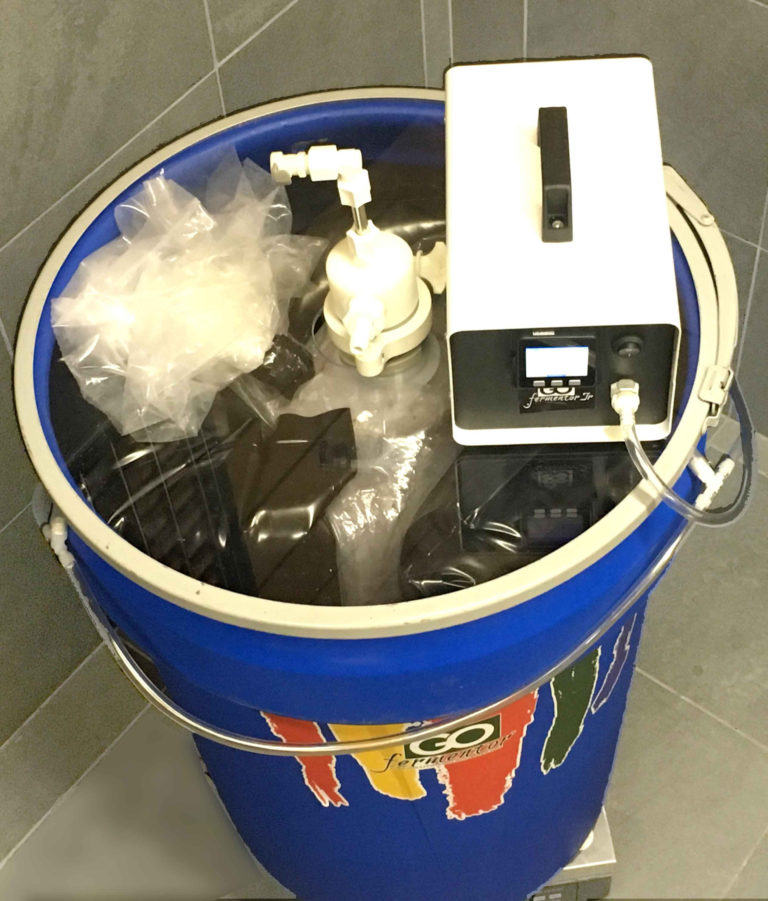Richard Carey
GOFERMENTOR HAS BEEN A unique tool for helping smaller wineries with experimental projects and small production runs for several years. Created by Vijay Singh, the original GOfermentor was designed to be used in 1,200 L bins that can hold up to 1000 Kg (2,200 lbs.) of grapes. I have been involved with Singh since the introduction of the first GOfermentor as a consultant, offering suggestions and tweaks to this novel approach to winemaking as he developed both a junior (smaller-sized) version and one for larger production.
Recently Singh released the GOfermentor Jr., which is designed to be a new tool for wineries to help in product development, starting with fermentation characteristics and using small volumes that are scalable to full-scale production. This smaller version uses the same system as its larger brother: an inflatable bladder is inserted, in this case, into a specialized 35-gallon drum.
The primary target market for this device is the home winemaker, but commercial wineries will find this smaller version to be a valuable tool when they want to experiment with fermentation methods, yeast trials, nutrient trials or other aspects of wine production where small volumes of scalable product can be used to evaluate the feasibility of process changes.
For new product development or modifying a protocol for an existing wine type, one of the more important issues that need to be addressed is replication of the treatment of the product. Validation of that work requires multiple treatments so that statistical analysis can be used to be sure the protocol reliably produces the desired effect.
Small batch fermentation for the purpose of scaling up experimental levels is one of the more important and more expensive tasks to standardize. It is well-known that small changes in protocol on a batch can magnify their effect in the scale-up process. The larger the batch size, the more expensive the protocol. To minimize costs, wineries may reduce the number of replications, which then has the consequence of increasing the possibility of errors in the results.

